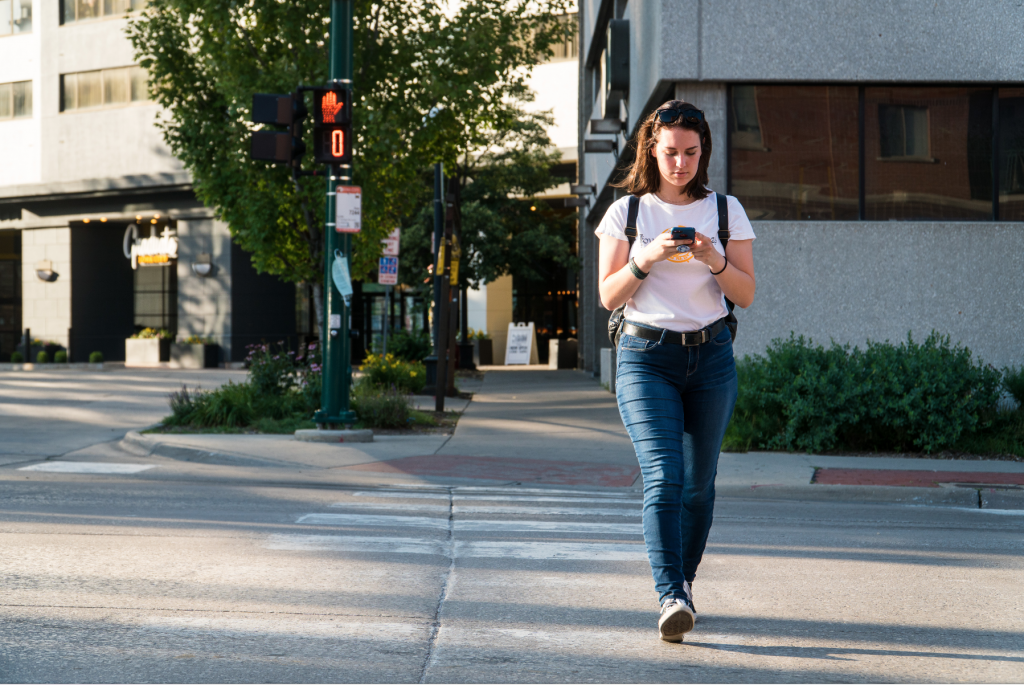On a typical day in between classes, college campuses are filled with distracted pedestrians interacting with their cellphones, unaware of their surroundings.
However, these pedestrians are constantly at risk for potential vehicle collisions because of such distractions as texting.
University of Iowa researchers last month published a study that showed the effects of sending alerts to a texting pedestrians’ cell phones to potentially alter their decisions when crossing busy streets.
“People are using cell phones more and more nowadays, and they’re engaging in texting when they’re doing some kind of walking, and we think that when they’re crossing streets, it might have the most severe consequences,” researcher Shiwen Zhou said.
Professor Joseph Kearney said the group wanted to look at how texting influences decision-making in pedestrian street crossing.
“[We looked] at some new technologies that are going to be available in the future and … how could they make road crossing safer,” Kearney said.
Researchers conducted the experiment using 48 undergraduate students in a 3D virtual simulator that realistically replicated a crosswalk with oncoming vehicles using three conditions — texting, warning, and control.
UI researchers compared a group of texting pedestrians who received a warning alert on their phones when crossing a busy street with pedestrians who did not. The results were then compared with a control group of pedestrians who crossed the street without texting at all. The study analyzed the pedestrians’ decision-making and gaze behavior.
The study showed texting pedestrians who received the alert were more likely to be cautious when crossing the street, compared with texting pedestrians who did not receive alerts.
However, the study also indicated that those pedestrians were more likely to rely on the alert system and spent less time looking up at the surrounding environment. This could indicate participants depend on their technology; further research will need to be done for researchers to know more.
“I think [the warning] has a potential to be effective. We have seen that crossing with a warning is safer when texting, but if you’re on your phone, the best course of action is to pay attention,” postdoctoral research scholar Elizabeth O’Neal said.
Researchers assumed texting pedestrians who received the warning alerts after stepping on the street would stop and return to the curb, but they were surprised that a large number of texting pedestrians continued to cross the street.
“When you’re standing right at the edge of the road, it’s hard to get a warning early enough that tells you when you’re making an unsafe choice,” Kearney said. “Once people started an action, it was hard for them to stop.”
The researchers do not know the reason behind this behavior, but they will use the information to predict an effective time frame to issue an alert to a texting pedestrian.










